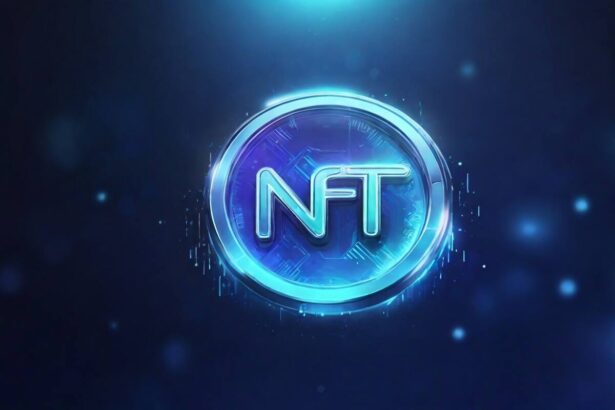In a world where blockchain and cryptocurrencies are on the rise, without everyone understanding the full meaning of digital assets or their essence, the new technologies have unlocked a new wave of wealth generation opportunities and redefined the concept of value. By leveraging systems with complex algorithms and hashing methods, lots of projects with diverse interests are created and applied in various areas starting from commerce to arts to healthcare.
NFT Metadata is a string of data that contains the details of the digital assets. This holds the important details including the characteristics and properties of a particular NFT.
While the use cases of the new technologies and projects are novel and still unraveling, there is no denying the impact they have had in the global market and economy. There are new investments opportunities and financial modifications aimed at generating revenue from the application of these new technologies. Examples of these include memecoins, DeFi (decentralized finance), NFTs and so on.
What are NFTs?
It is important to understand the concept of Non fungible tokens because there have been lots of misconceptions about the tokens. NFTs are, at their purest form, unique digital signature that signifies ownership and authenticity of the asset that it is embedded to. They are described as non fungible because of their inability to be exchanged and divided. Every token is unique and different such that one NFT can not equal another NFT. NFTs are transparent and secure digital certificates that show ownership and are hosted on a public blockchain like Ethereum or bitcoin.
These digital assets have a variety of use cases and while some may claim that they are just products of pop culture, speculation and exaggerated utilities, Ntfs creates value in different sectors including real estates, health care and digital artworks. It has revolutionized the art world completely and changed the entire concept. Digital creators for the first time in a while found an interesting way to get their works appreciated, secure their copyrights and earn both as outright sale and through royalties.
The art sector has generated over millions in the capital market from works traded on the NFT Marketplaces. However, the legal implication of the assets may not be as it is preached. NFTs do not necessarily ensure copyright transfer. The cryptographic hash in NFTs act as verification of ownership and proprietorship because of the advanced encrypted signature that enable asset tracking on the blockchain. They contain cryptographic distinguishable codes and a metadata as well.
Read this comprehensive guide by DroomDroom to learn about the top NFT marketplaces.
What is NFT Metadata?
NFT Metadata is a string of data that contains the details of the digital asset. It is usually displayed in a JavaScript Object Notation (JSON) format. It contains description text including the characteristics and properties. Some of the details include the name of the asset, the transaction history, link to the storage and its unique traits. It also enhances the server process and data storage.
This tweet shows what an NFT metadata looks like:
Difference Between Data And Metadata
Data means raw facts and numbers collected from different sources through observation, measurements and other means. It may or may not have been processed. It may or may not be informative as well.
However, Metadata or NFT metadata is always informative. It is a descriptive collection of data that references other data. It provides specific information about the data it is describing including date, time, weight etc.
Types of NFT Metadata
Descriptive Metadata
Renders information about the features of the object it is describing. It provides helpful resources about who created the token and its utilities as well as what is included within the token.
Structural Metadata
Refers to information about how the data within the object is arranged and the relationship that exists within the structure of the object’s data.
Administrative Metadata
Provides information about the object’s creation and its access management. It includes data about the user license, copyrights and other agreements.
Analysis of Metadata
Storing metadata within an NFT eliminates the need to store the files directly on-chain. It can be stored on-chain but this is rarely the case due to some technicalities. On-chain metadata is built directly into the blockchain. The minting costs are high and it consumes a lot of block space. Research estimates that minting 1 gigabyte NFT could cost up to 17,000ETH.
As a result, creators and users store their NFT Metadata off-chain in a Uniform Resource Identifier Link. The link is embedded in the NFT’s smart contract, permanently storing the metadata on the blockchain, and redirects to the location of JSON. An example of servers where metadata can be stored include Google drive which is centralized. It can also be stored on the distributed peer-to-peer file system.
Regardless of the costs associated with storing Metadata on-chain, some believe that it is worth the value. Storing metadata on-chain increases the price of the NFT in the marketplace because it guarantees scarcity and as a result, on-chain storage is used as a marketing tactic. It also improves the outlook and quality of the NFT to the community, making it more authentic and valuable. Most NFTs stored on-chain are regarded as tamper-proof and secure. On-chain metadata would continue to exist even if the website on which it is hosted goes down. This is because of the immutability and persistence feature of the blockchain. It is hardly possible to undo what exists directly on a blockchain.
Role of Metadata to NFTs
Some NFTs are regarded as multi-utility and the metadata is one way to effectively describe the unique traits and utilities of an NFT.
Here are other ways that a metadata can improve the value of an NFT:
Transparency
In the blockchain ecosystem, transparency is a vital currency. To be more transparent, NFTs must provide necessary information about their utilities and features. Insufficient details regarding the rights of creators and holders can discourage potential collectors and investors from engaging with an NFT. By highlighting all the details and providing collectors with comprehensive details to guard their decisions, they can evaluate the metadata and attests the NFT’s transparency.
Improves Collaborative Advantage
While creators can work on individual projects independently, they can leverage collaboration with other projects to increase visibility and the intrinsic value of their creations. Collaborating with different creators would increase the utility of an NFT and allow them to create new unique data sets. However, to achieve this, the metadata allows anyone to see the necessary details for each of the sets as the utility increases.
Authenticity
One of the roles of an NFT Metadata is to improve the authenticity of the project. Most NFT projects appear to be an outright copyright infringement and lack originality. A comprehensive metadata helps debunk a false narrative and collectors can easily verify that an NFT is authentic. It allows the users to evaluate and compare the project to prove its originality by providing information like artist’s name, signature and other useful information. It also creates certainty and encourages positive engagements with the NFT.
Creates Relatability
NFTs without metadata appear to be overpriced JPEGs and investors would find it difficult to understand their utilities. This reduces the level of acceptance and reliability that such a token would enjoy. Metadata allows collectors to value the NFT and improve the way it is being perceived. Programmable NFTs with real-world utility are more likely to be appreciated once the metadata is available and comprehensive.
NFT Metadata Standards
The metadata standard of an NFT is important because it has a direct impact on interoperability across the NFT Ecosystem. There are other standards for creating NFTs but ERC721 is the most commonly used. Though the blockchain ledgers are originally used to facilitate transfer of fungible tokens like the Bitcoins and Ether, the ERC721 Standard leveraging digital scarcity and ownership created digital collectibles like Crypto Kitties. ERC712 is Ethereum based and uses solidity smart contracts. All the tokens are required to be non fungible and have unique token IDs.
The ERC1155 Standard is another popular NFT standard. Unlike the ETC721, it accommodates both fungible and non-fungible tokens in one contract and is useful in games. It offers the opportunity to create fungible, non-fungible and semi fungible tokens in a single smart contract.
Other standards include the BEP-721 and BEP-1155 offered by Binance on the BNB blockchain.
Four Aspects of NFT Metadata
Metadata should contain relevant information about the NFT they describe. There are areas of interests to consider and they include:
- Geometric Data
- Value
- Digital rights management
- Export format
Geometric Data
This refers to the dimension of the assets. It includes the weight of the NFT object, shape, size and its volume. In the case of purely digital artworks without physical replica, it may contain the data size and Color combinations. When creating a dimensional description of an NFT object, it is important to put into perspective the look and feels of the object as it will be if it were physical. Visual information about the NFT objects should be accounted for.
The reason is to create a near-to-life digital experience for the users.
To further illustrate, in the case of a fashion mesh like Nike, the dimensional data and description of an NFT fashion object (such as a shoe or gym set) is vital because users are able to to identify the object and determine if it has a physically based rendering.
Physically based rendering refers to a graphics approach that seeks to present images and digital objects in a way that models after the real life representation by carefully manipulating light and surface shading in the objects. It is an approach to creating 3D contents. One of the advantages of PBR in metadata includes long term preservation of the digital work.
Value
One of the advantages of digital artworks is the price valuation. Unlike most physical objects, it is not easy to determine the price of an online object. However, the value of some objects may not be as high as the physical objects. Value of an asset can be derived from various aspects such as community, utility, rarity or quality. In a metadata, the valuation of the object should be addressed.
Digital Rights Management
The legal environment and IP Laws surrounding NFTs are far from stable and may have lots of implications. Though NFTs contain smart contracts, other licenses like the end-user license are other forms of agreements. How it tends to apply to a user upon download or use is critical. Such information should be made available at the time of purchase.
Export Format
The ability to create and export digital data in compatible formats is crucial. The volume of the object could affect the asset because a heavy NFT object could be bothersome. Also evaluating the appropriate platform should be considered alongside the file format. It is one of the details that should be included in a metadata.
Creating NFT Metadata
Metadata can be created manually using the Solidity programming language or even Python. This would require the developer or creator to manually program the metadata into the interface using the programming language.
However, on marketplaces like OpenSea, there are various customisable options available for the creation of the NFTs. It is generated during the creation process of the NFT. Other marketplaces like Rarible and SuperRare allow you to create subfolder collections and connect creators with similar metadata.
How to Check Your NFT Metadata
Usually, the metadata of NFTs are assigned prior to the minting process. There are various platforms where anyone can verify their NFT Metadata. For Ethereum based NFTs, you can check your metadata using the Etherscan. Other platforms include Polygon’s PolygonScan, Arbitrum’s Arbiscan and Avalanche’s Snowtrace. For Binance-based NFTs can als get verified on the BscScan.
Conclusion
Web3 technologies open a new world of opportunities for finance and innovation. Non fungible tokens are beyond digital paintings and JPEGs. They are valuable unique signatures. However, without a proper description, it would be difficult to associate any form of importance to these digital assets. Metadata does not only create relatability but also visibility. Whether it is stored directly on the blockchain, though costly but has its pecks, or off-chain, metadata is the introductory data of an NFT. Developers and Creators must understand the value of a metadata to NFT collections and focus more on metadata to add more context.
Frequently Asked Questions
What is the difference between data and metadata?
While data are raw facts and numbers, metadata is always informative, providing specific information and references about the data it describes.
Why is storing metadata off-chain more common?
Storing metadata off-chain is more common due to the high costs and technical challenges of on-chain storage, although on-chain storage guarantees scarcity and adds value.
What role does metadata play in NFTs?
Metadata improves an NFT’s transparency, authenticity, collaborative advantage, and relatability, providing detailed information to guide collector’s and investor’s decisions.
What should be included in NFT metadata?
NFT metadata should include information on geometric data, value, digital rights management, and export format to provide a comprehensive description of the digital asset.
What are the NFT metadata standards?
Common NFT metadata standards include ERC721 and ERC1155 for Ethereum, and BEP-721 and BEP-1155 for Binance, each with unique characteristics and applications.
What should be included in NFT metadata?
NFT metadata should include information on geometric data, value, digital rights management, and export format to provide a comprehensive description of the digital asset.
How can you create NFT metadata?
Metadata can be manually created using programming languages like Solidity or Python, or generated automatically through NFT marketplaces with customizable options.
Why is metadata important for NFTs?
Metadata adds context, visibility, and relatability to NFTs, helping to associate importance and value to these digital assets, whether stored on-chain or off-chain.



















